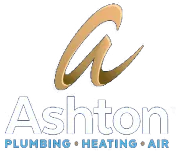This article is written for recent home buyers or renters to let you know some of the areas of your dwelling you might want to check to ensure safety and that your equipment is functioning properly.
Polybutylene piping is one of the leading causes of floods in homes built between the 1970s and 1990s in Metro Vancouver. Be sure to hire a licensed home inspector to check if your home was plumbed with Poly-b. See our recent post about the dangers of Poly-B piping here.
House Water Pressure
Water pressure can be a good indicator of how well the home was taken care of and the condition of the home’s plumbing. Excessive water pressure can put extreme stress on the pipes and connections in the walls. This may lead to premature failures, causing floods and water damage. A Pressure Reducing Valve (PRV) is responsible for regulating the water pressure in your home. A typical PRV has a life expectancy of 7-10 years and should be replaced to ensure your home’s plumbing is protected from excessive water pressure.
Sewer line Replacement and condition
A sewer line is rarely seen but is a vital part of your home’s plumbing system. Any sewage and wastewater from your sinks and toilets are removed from your home by an underground sewer line. A blocked or broken sewer line could spell disaster for your home. Tree roots, foreign debris, and collapses are the leading causes of broken sewer lines. Consider hiring a plumber to use a drain camera to inspect the condition of the sewer line so you can make the right decisions.
Waterline replacement and condition
Your home receives its water from the City’s main waterline. Consider having your building inspector look at the condition of the waterline to ensure proper maintenance was done on the waterline and if it has been replaced at some point. A leaking waterline will often create a flood and in some cases, crack your home’s foundation walls.
Hot water tanks and Furnaces
Reliable hot water and an efficient furnace means year-round comfort for your family. Hot water tanks are typically gas-powered and should be replaced every 5-8 years to prevent unexpected leaks. If you are replacing the hot water tank, consider a tank-less hot water heater to save money on running costs. A typical hot water tank replacement is around $1,200 and can be installed in under 5 hours by a qualified technician.
Furnaces have a typical life expectancy of about 8-10 years depending on how well they were maintained. Furnaces manufactured in the past 10-15 years are what we call high-efficiency furnaces. These furnaces range from 93-98% efficiency compared to the old furnaces made in the 1960s. An old furnace is typically louder, and up to 60% less efficient than a new furnace. A modern furnace will often be quieter and more efficient, which translates to lower running costs. A typical furnace replacement starts around $4,000 and can be installed in usually 1 day by a qualified technician.


